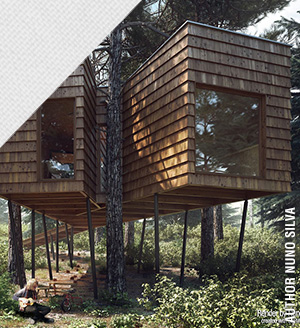In this lesson I’ll talk about Final Render and Post Production.

LESSON#31
Sometimes night versions seems, hard to achieve.
But I can prove  this is not true if you have a simple vision of the photographic renders and you can how to simply handle all the tools!
Can’t you believe? 🙂
Just watch this video and tell me what do you think in the comments below!
CONCEPTS:
- Do not use VRayLight Portals at this time
- Don’r forget to delete the VRaySky (environment panel)
- Just place light sources where they actually are
- Use V-Ray Light “as substituite”: invisible + reflections(off) + Specular(off)
- Shutter speed exposure 50 is good for average quantity of light
- Use Override Mtl to do a good light balance without lose the materials assigned
- Create a chromatic contrast with handling “temperature”;
- Use V-Ray 2 Sided Mtl for thin objects;
- Use “screen” blending mode to add reflecions in photoshop
As I said: is it reaaaally simple, or not? 🙂
You just need to think with your mind, just doing things more logical. Â
STUDY HERE THE WHOLE TRAINING: FROM LIGHTING TO THE END
* Premium Area *
 If you are a Premium Member – DOWNLOAD MODELS NOW!
download the LIVING NIGHT MODEL.max and the PSD file, in the links below:
[private Premium|Premium-1year|theliving]
- Living Night Model (use the textures from the previous lessons!)
- Night – PSD
[/private]
 / Also Learn Corona Renderer
/ Also Learn Corona Renderer



I’m honored to be the first to say:
Ciro …Big Up!!!
Really big respect!
Hi Ciro
two thumbs up
thank you so much.
simply perfect!
5 stars 🙂
Great!!!
Why do you use wire color instead of using the alpha channel for the windows, its better.
Hi Luis, unfortunately you can’t because we have the window glass and the alpha channel results completely white.
bravooooooo tu es fort et le meilleur merci ciro.
Another great lesson, thanks you!!!
Basic expression and great lesson, thank you!
Hi Ciro,
This is a huge time saver! thank you!
Nice. I like the way you used your V-Ray 2 Sided Mtl! Keep it up!
Thanks again Ciro.
thank you so much. !!!
Good Tutorial..Thank you!!
Ciro Sannino,огромное Вам ÑпаÑибо за такие знаниÑ!!! ÑпаÑибо,ÑпаÑибо,ÑпаÑибо
tanx man very good .I like this and I need it
amazing lesson!!! thank you!
hey like the way you do your rendering am really interested in mastering 3ds max though i cant afford to buy your tutorials. If you can help me ad very much appreciate. thank
Very Thanks Mr. Ciro
your work is perfect.
real great lesson.
Its amazing …..thank you so much….
last time i seen to you are the above tutorial
wow i like it. please send me this tutorial. i want to learn again.
please teach me how can i make the arch elements in 3ds max
Cool tip. I’m confuse without using any photometric light, there are good shadow in generic view but after final render why the shadow not so noticeable, how can we get shadow little more visible.
ok thanks big thanks i like +++ thanks
simplest way of teaching……………. in V-ray + PS,
Breaking complicated elements into the simplest methods …………. I am pleased,
thank you, may god bless you.
Rajesh G
sweet! thanks for tips, learnedsmth interesting on chromatic contrast
thanks for your tips……
Great work!!!
Thank you very much.
Great Tutorial and Will subscribe soon.
That was so usefull..
That was sooooooo
AMAIZING….
Thank you very very much
Suffered to find out why my roof was full of round spots, forgot to turn the material glass refraction AFFECT SHADOWS. Very good tutorial, Congratulations Ciro.
simple but great result!
Hello,
im not able to open the zip files for this lesson, it seems they are damaged…
can you fix this problem…
thank you
Thank you Peter! Files are ok now! 😉
Simply amazing!
Very good lesson. Simple and with great results.
i like ur job
Bellisimo,
Merci, Gracias, 🙂